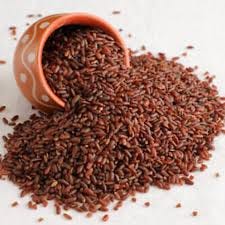A newsletter recommending good examples of storytelling across:
3 Trivia
2 Fun Facts, and
1 Photograph.
Let's dive in…
Trivia’s:
1. Art:
This unique concept, inspired by Marcel Duchamp’s early 20th-century shift in art, emphasizes imagination over form. Garau’s renowned piece, titled "Io Sono," challenges viewers to envision the artwork with only a title as their guide. His work is often associated with themes of the intangible and relies on thought and imagination. This approach gained relevance during times when physical spaces were less accessible, like during the COVID-19 pandemic, as people sought ways to engage with art in a non-physical, imaginative sense.
Which form of art did Salvatore Garau innovate?
2. India:
In ancient Tamil Nadu, a certain event involved a man demonstrating his strength by lifting a heavy rock as part of a traditional sport to win approval for marriage. To prepare him for this challenge, his mother-in-law served a specific variety of thick, red rice, known for its high nutritional value and energy-boosting properties. This rice, named after a family role, the tradition, reflected in the rice's name, symbolizes strength and virility and finds mention in Sangam literature.
What is the common English term for the family role associated with this rice?
3. General:
Dating back to the early 18th century, its prominence grew during the Industrial Revolution, when glassblowing techniques standardized its production. This size is optimal for balancing oxygen exchange, crucial for the aging and maturation of its contents, and aligns perfectly with the amount typically served during meals in French culture.
Beyond tradition, it became a practical standard, fitting neatly on retail shelves and being convenient for group consumption. Even today, while experimentation with smaller or larger alternatives exists, this remains a steadfast industry benchmark.
What is this iconic measure is being talked about?
Fun Facts:
Ancient Greek "Air Conditioning" with Plants!
The ancient Greeks tackled the heat and cold using plants and clever design: They planted olive trees on the north side of their homes. The dense foliage acted as a natural barrier against the chilly northern winds in winter.
On the south side, they chose leafless trees. These let the warm winter sun heat their homes but provided full shade during the blazing summer months.
Roofs were carefully designed with overhangs calculated to block summer sun while allowing lower-angled winter sunlight to enter and warm the interior.
Greeks even grew vines over trellises. These not only provided shade but also delivered fresh grapes—a delicious bonus!
Ever notice those dazzling white houses on Greek islands? The color wasn't just aesthetic; white reflects sunlight, reducing heat absorption, making it a perfect choice for sunny climates.
Walls were often whitened with calcium-based coatings. Besides keeping homes cool, these coatings absorbed moisture, repelled insects, and even acted as a natural disinfectant.
Did you know? The enchanting "coin trees" of Britain trace their origins back to the 1700s! People believed that hammering coins into trees could cure their illnesses and bring them good health. But beware—removing a coin was thought to bring sickness to the culprit!
While we can't vouch for its healing powers, these mystical trees are a fascinating sight. Keep an eye out for these unique wonders on your next trip to the UK!
How can I improve your reading experience? Feel free to send me any feedback or suggestions at this email. You’re also welcome to share your experience and connect with me here!
Email- triviatales.in@gmail.com
Photograph of the Day:
Chaurasi Kutia:
Beatles Ashram, also known as Chaurasi Kutia, is nestled in the serene foothills of the Himalayas, near Rishikesh in Uttarakhand. Situated on the eastern bank of the Ganges, this ashram is steeped in spiritual and cultural history. The name Chaurasi Kutia, meaning "84 Huts" in Hindi, originates from the numerous meditation huts (kutiyas) constructed on the premises. These huts were used by Maharishi Mahesh Yogi's students for meditation and spiritual practices.
The number 84 holds profound significance in Hindu philosophy, representing the 84 lakh (8.4 million) life forms that a soul is believed to traverse in the cycle of birth and rebirth before attaining liberation. Thus, the name not only describes the ashram’s physical layout but also reflects its spiritual essence as a sanctuary for transcendental meditation and enlightenment.
Once a training hub for Maharishi Mahesh Yogi's Transcendental Meditation technique, the ashram gained international fame in 1968 when the Beatles, alongside other notable personalities like Donovan, Mia Farrow, and Mike Love, visited seeking spiritual growth. This period of introspection and creativity inspired much of the Beatles' iconic "White Album."
Abandoned in the 1990s, the ashram transformed into a haven for nature and history enthusiasts following its official reopening in 2015. Its jungle-clad ruins, adorned with meditation domes and artistic graffiti, now attract visitors from around the globe. In February 2018, the ashram celebrated the 50th anniversary of the Beatles' visit with a special exhibition, cementing its legacy as a unique confluence of Eastern spirituality and Western pop culture.
In case if you have missed my previous newsletters here are the links to them…
give it a click
Answers:
Immaterial or invisible art
Bridegroom rice
750 ml wine bottles






